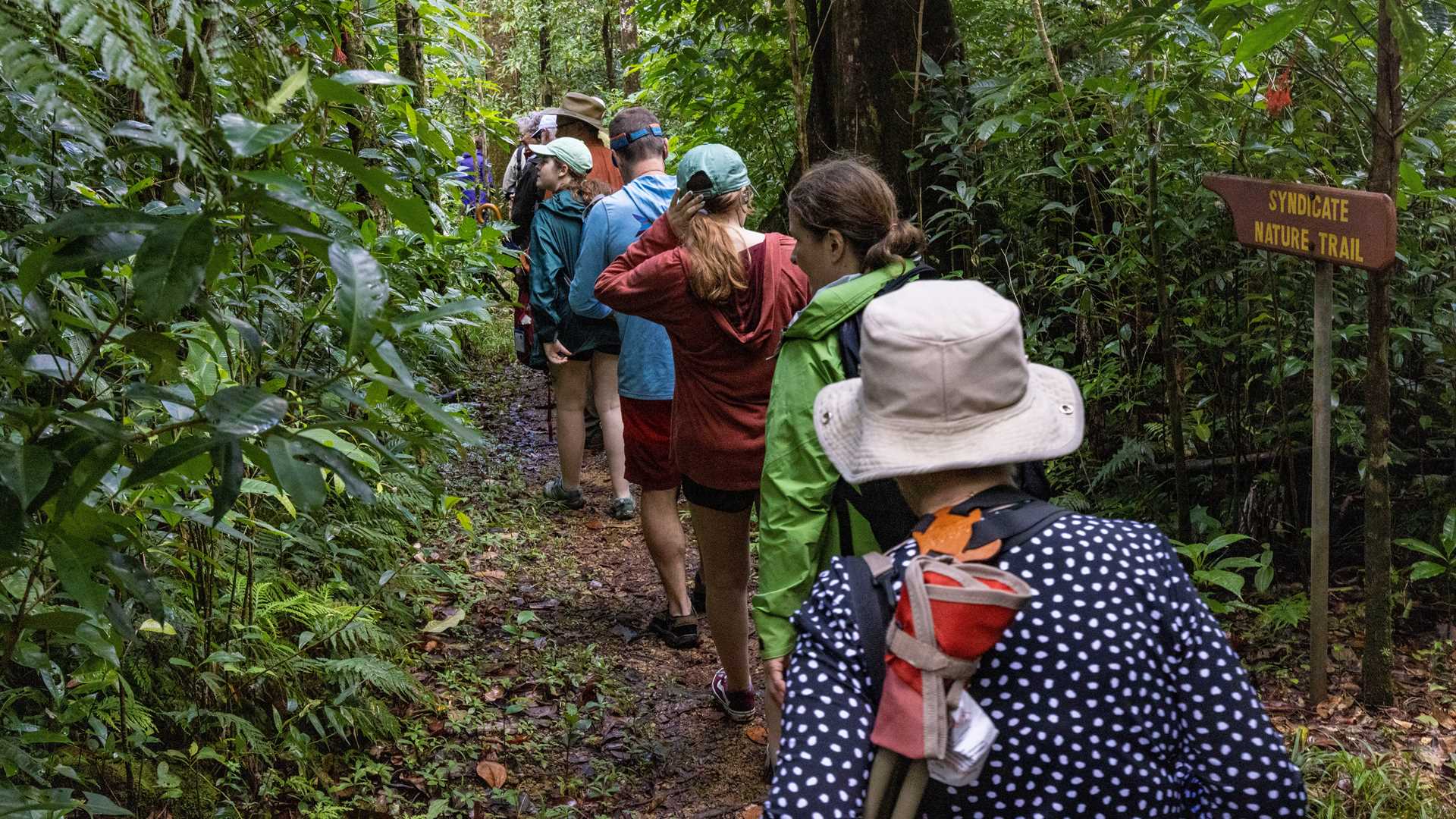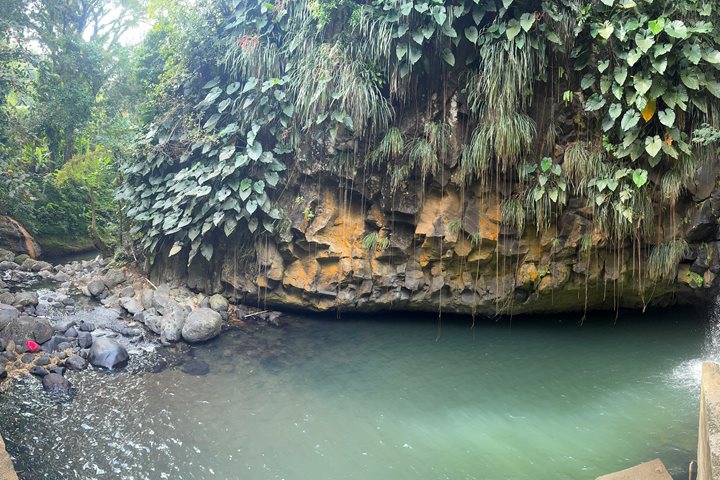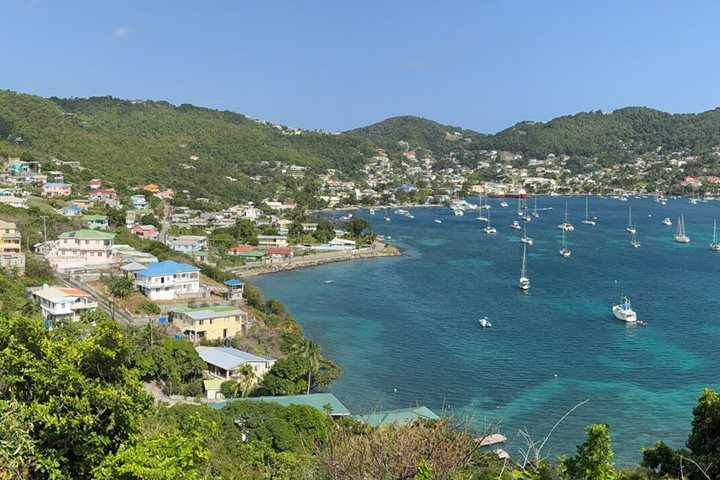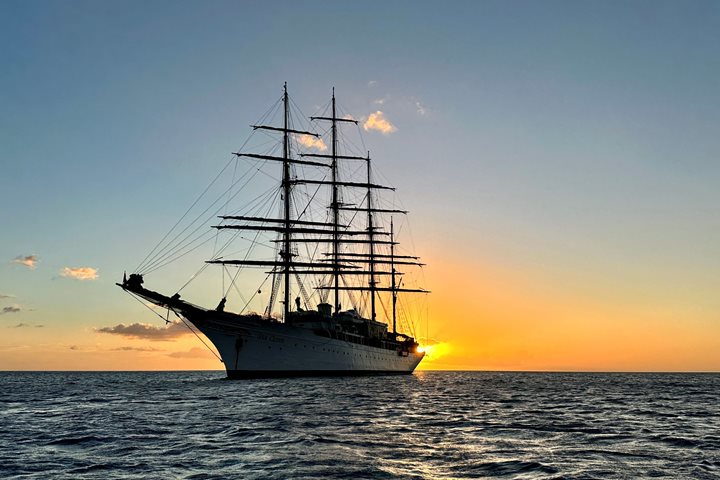The sun rose over Morne Diablotins (“Devil Mountain” in French Creole) at 6:37 a.m. as we approached Prince Rupert Bay. Indigenous Amerindians called the bay Waitikubuli, or “the woman whose body is so long.” The sky was gray and threatening with clouds hanging below the mountain peak. During the night, Sea Cloud averaged about 7 knots over water. We had variable winds, from a gentle 3 knots to 25 knots. At breakfast, it was apparent that everyone slept soundly, and we were raring to go. Dominica is at 15.34.7 latitude and is justifiably called the “Nature Isle.” Despite the devastation of category 5 Hurricane Maria in September of 2017, the foliage is quickly growing back. I could not believe the recovery at Cabritz. When I arrived in 2018, I saw only sticks without leaves.
We boarded minibuses for an hourlong ride to the rainforest on the slopes of Morne Diablotins, the highest mountain on the island at 4,775 feet. We passed small farms of coffee, citrus, various bananas, coffee, yams, dasheen (a type of taro), nutmeg, papaya, and corn. The roadside was bordered with cotton, hibiscus, and poinsettia trees. Yes, poinsettias grow as tall as 20 feet here! The rainforest gets 400 inches of rain on average, and it was a tad moist in spots!
Arriving at our destination, we broke into groups and entered the rainforest. The climate suddenly changed, and we had a lovely breeze and cool temperatures. Our guide Glenn, who I have known for twenty years, shared with us from his enormous store of knowledge about the trees and plants. One advantage of the hurricane – if it can be called an advantage – is that more light penetrates the tree canopy. We saw a variety of birds, from the crested Antillean hummingbird to the bananaquit.
After lunch, we joined Tom Heffernan for a visit to historic Fort Shirley. This British fort was constructed in 1770 and was based on the designs of Peter Harrison, a prominent Colonial American architect. At its zenith, it had a garrison of 700 soldiers and a regiment of Afro-Caribbeans, the 8th West Indian Regiment. The garrison was abandoned in the 1850s and was utterly taken over by the jungle. Strangler figs broke down the walls, and trees grew through the roof. In short, you could not even see the fort. It had become part of nature. In 1982, Dr. Lennox Honeychurch – an old friend, a trained Oxford PhD historian, and a local Dominican – took it upon himself to reclaim the fort from the jungle. Lennox has been working for almost 40 years and has restored massive sections of the fort.
After our visit to the fort, we enjoyed snorkeling directly off the pier and a swim on Purple Turtle Beach. The day was complemented by a splendid dinner on the Lido Deck under a beautiful sky full of stars. Tomorrow, we travel to the nearby Ile des Saints.









